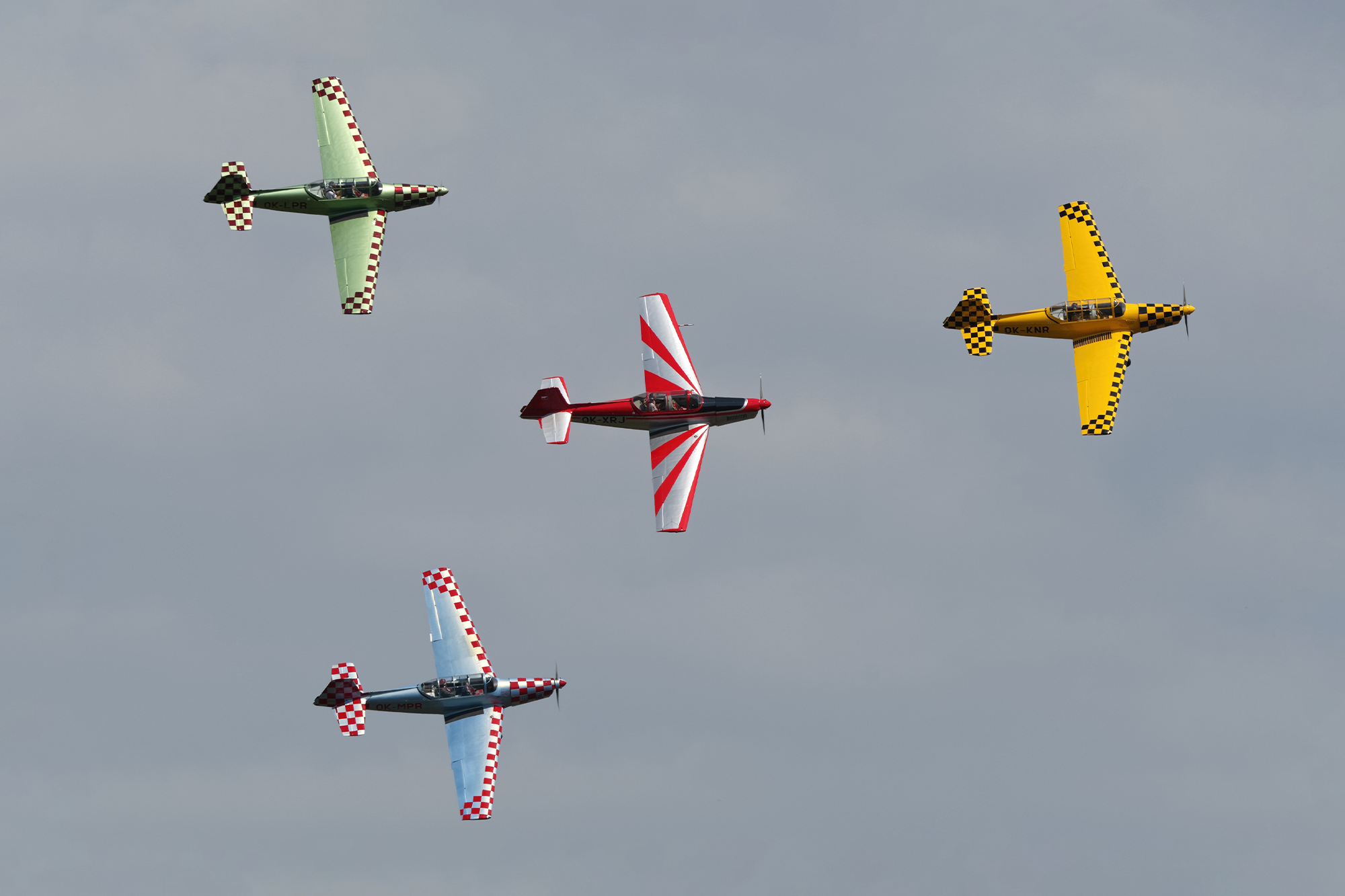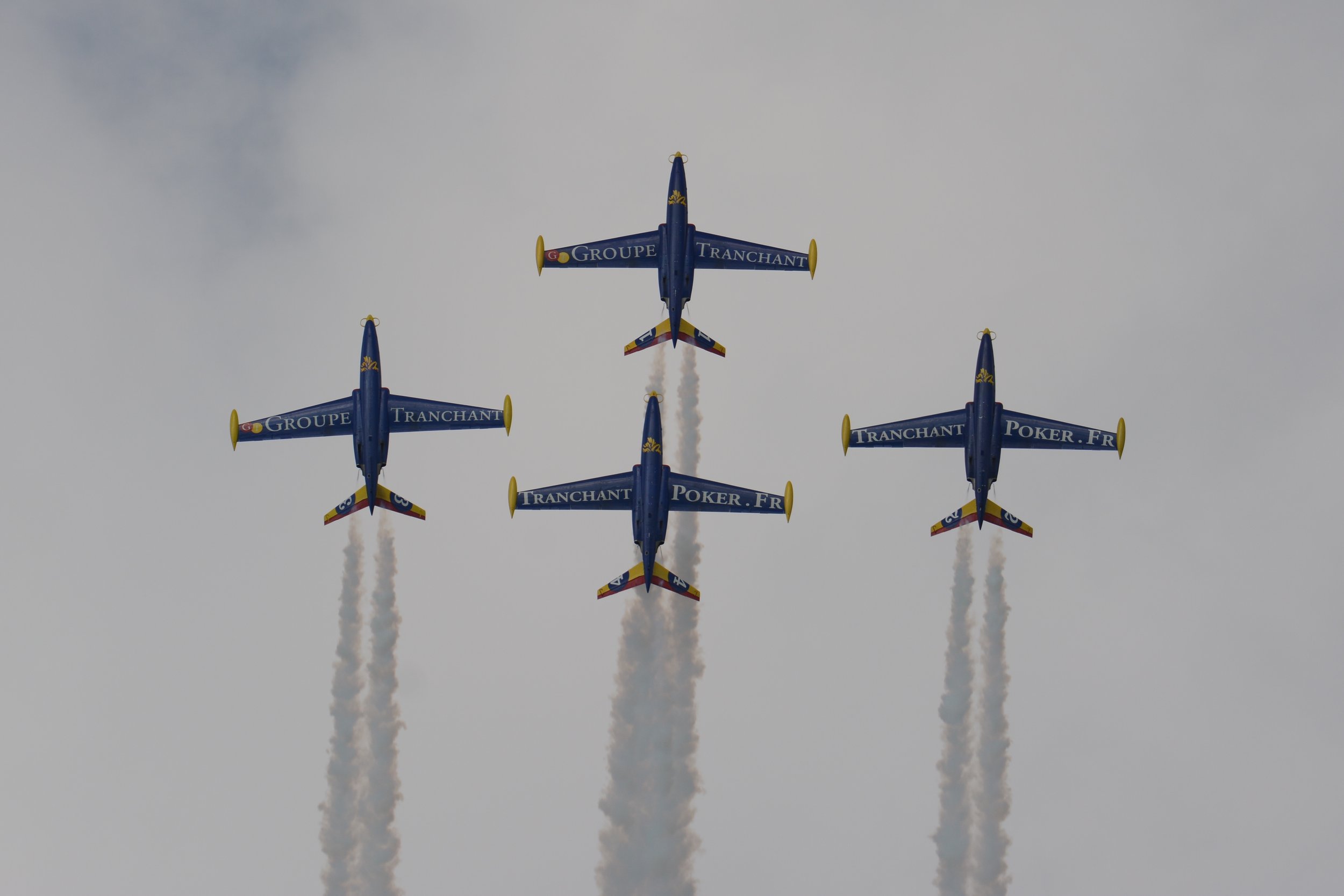Arctic Eagles
Country
Finland
Size
3/4 Aircraft
Base
Oripaa Airfield
The Arctic Eagles, a civilian aerobatic team known for their thrilling performances, soar through the skies with four distinct aerobatic bi-planes. Established in 2013 by skilled pilots Raimo Nikkanen, Tapio Pitkänen, and Miikka Rautakoura, the team traces its origins back to the Red Birds, a legendary aerobatic group founded decades earlier by the renowned Finnish aviator Seppo Saario. Paying homage to their roots, the team initially adopted the name "Saario Special" before transitioning to the moniker Arctic Eagles in 2014. The team expanded in 2016 with the addition of Jyri Mattila as the fourth member, allowing them to perform mesmerizing four-ship displays that captivate audiences worldwide.
The Arctic Eagles display, renowned for its precision and skill, typically spans from 8 to 10 minutes. Spectators are treated to a dazzling spectacle of tight formation aerobatics, dramatic breaks, thrilling opposition passes, and captivating solo aerobatics. In addition to their dynamic four-ship formation routines, the Arctic Eagles showcase their agility and expertise in captivating displays as a duo or trio, showcasing their versatility and teamwork.
| Back to Top |
Aviat Eagle II / Christen Eagle II
The Christen Eagle, which later became the Aviat Eagle in the mid-1990s, is an aerobatic sporting biplane aircraft that has been produced in the United States since the late 1970s.
Designed to compete with the Pitts Special by Frank Christensen originally of Salt Lake City, Utah, the Eagle II is marketed in kit form for homebuilding. The Eagle II is a small aircraft of conventional configuration with single-bay, equal-span staggered biplane wings braced with streamlined flying and landing wires and an I-strut to form a box truss. The pilot and a single passenger sit in tandem underneath a large bubble canopy. The tailwheel undercarriage is fixed, with the mainwheels mounted on spring aluminium legs. The main wheels are housed in streamlined fairings. The fuselage and tail are constructed of Chromoly steel welded tube, with the forward fuselage skinned in aluminium and the rear fuselage and tail covered in fabric. The wing structure is Sitka spruce wood and fabric covered. The engine cowling is fibreglass. By 2011 over 350 aircraft were flying.
| Back to Top |
Pitts S-1S
The Pitts Special (company designations S-1 and S-2) is a series of light aerobatic biplanes designed by Curtis Pitts. It has accumulated many competition wins since its first flight in 1944. The Pitts biplanes dominated world aerobatic competition in the 1960s and 1970s and, even today, remain potent competition aircraft in the lower categories
Curtis Pitts began the design of a single-seat aerobatic biplane in 1943–1944. The design has been refined continuously since the prototype first flew in September 1944; however, the current Pitts S-2 still remains quite close to the original in concept and in design.
Several of the aircraft that Curtis Pitts built had a picture of a skunk on them and were called "Stinkers". After she bought it, aerobatic performer Betty Skelton called the second aircraft that Curtis built, "Little Stinker". The prototype S-2, which was the first two-seat Pitts, was "Big Stinker", the prototype Model 11 (later called S-1-11B) was "Super Stinker", and the prototype Model 12 was the "Macho Stinker".
In 1962 Curtis Pitts set up Pitts Enterprises to sell plans of the S-1C to homebuilders.
Certified versions of the Pitts are now produced by Aviat Aircraft in Afton, Wyoming. It is available as the S-1 single-seater with an up to 200 hp (150 kW) flat-4 Lycoming engine and a 17 ft 4 in (5.28 m) wingspan, or as the S-2 two-seater variant featuring a 260 hp (194 kW) flat-6 Lycoming and a 20 ft (6.1 m) wingspan. Pitts Specials have been equipped with engines of up to 450 hp (338 kW).
Plans for the single-seat Pitts S-1S are also available from Aviat Aircraft. The S-1C and derivative S-1SS plans and kits are supplied by Steen Aero Lab in Palm Bay, Florida. Many hundreds of homebuilders have successfully completed and flown the Pitts since plans became available in 1960.
| Back to Top |
Ultimate Aircraft 10 Dash 300S
The Ultimate Aircraft 10 Dash is a Canadian single-seat sport and aerobatic biplane designed and built by Ultimate Aircraft Corporation of Guelph, Ontario.
The 10 Dash Model 100 was designed as a sport biplane that could be either bought assembled or for amateur construction from either plans or a kit. The first prototype 10 Dash 100 first flew on 6 October 1985. It is designed to have either a 100 hp (75 kW) or 180 hp (134 kW) engine fitted for example a 100 hp (75 kW) Continental O-200 engine. It is a braced biplane with wooden wings, a welded steel tube fuselage, fixed conventional landing gear with a tailwheel and a single open cockpit. An aerobatic variant, the 10 Dash 200, is powered by a 180-200 hp engine. A competition aerobatic variant, the 10 Dash 300 can be fitted with either a 300 hp (224 kW) or 350 hp (261 kW) Lycoming engine with a three-bladed propeller. The 10 Dash 300 has a longer fuselage and longer-span wings with full-span symmetrical ailerons. A tandem two-seat variant, the 20 Dash 300, also joined the family.
| Back to Top |
Pitts Model 12
The Pitts Model 12 (also known by its nicknames "Bolshoi", "Macho Stinker", "Pitts Monster") is a high-performance aerobatic biplane designed around the Vedeneyev M14P/PF engine. The aircraft can be built from plans or as a kitplane; or can be bought ready-to-fly from the factory.
The Pitts Model 12 was designed by Curtis Pitts starting in 1993. Pitts presented his completed design on his 80th birthday in December 1995.
The Pitts Model 12 is a biplane built using fabric-covered welded steel tubing for the fuselage, and fabric-covered wings with wood spars. The leading edge is made of formed plywood. The landing gear is solid aluminium.
| Back to Top |





| Back to Top |

































